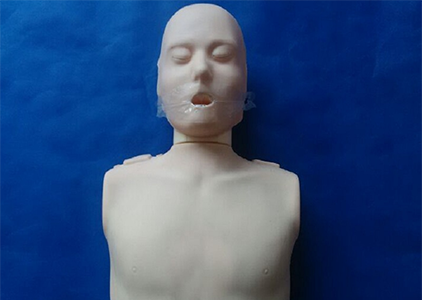
When first aid cpr is required on an infant, the following are general steps and recommendations:
Determine consciousness and breathing: First, quickly check whether the baby is conscious and breathing normally. If the baby is unconscious or not breathing normally, cpr needs to be started immediately.
Call for help and call the emergency number: If there are others at the scene, call the local emergency number immediately and tell them that you need cpr instructions for your infant. If you are alone, perform heart compressions for one minute before calling emergency services.
Perform cardiac compressions: Find the correct location for cardiac compressions, usually between the nipples. Use two fingers to apply pressure, or for infants under one year old, use the heel of your hand. The compression depth is about 1/3 to 1/2 of the chest thickness, and the compression depth is 100 to 120 times per minute. Make sure you are compressing at the correct frequency and depth, and do not pause during compressions.
Open airway: While performing cardiac compressions, the baby's airway needs to be kept open. Place one hand on the baby's forehead and the other on the middle of the mandible, and tilt the head back slightly, but not too far to avoid damaging the cervical spine.
Perform artificial respiration: If there are other people, ask them to hold a mask tightly against the baby's mouth and nose and blow in air to perform artificial respiration. When giving artificial respiration, make sure you blow deeply enough and see your chest lift. Carry out a complete breathing cycle (30 compressions and 2 artificial breaths) after every two artificial breaths.
Continue cpr: While waiting for emergency personnel to arrive, cpr should be continued until the baby resumes spontaneous breathing and heartbeat. Carry out 100 to 120 heart compressions and appropriate artificial respiration per minute.
Observe vital signs: While waiting for emergency personnel to arrive, closely observe the baby's vital signs, such as heartbeat, breathing, complexion, etc. If the baby's breathing and heartbeat recover, close observation should continue and the baby should be transferred to a medical facility for further treatment as soon as possible.
It should be noted that the specific operation methods of cpr may be different for newborns and small infants because their bodies are not yet fully mature. Therefore, it is recommended to obtain professional training or consult professional first aid personnel before proceeding.
In addition, in order to ensure the correctness and effectiveness of cpr operations, parents and guardians should receive relevant training and guidance on a regular basis. Through simulation training or training courses provided by professional institutions, you can better master the operating skills and methods of infant cpr, so that you can quickly and accurately provide first aid measures to infants in emergencies.
All in all, cpr for infants needs to be performed carefully and accurately. In an emergency, stay calm, act quickly, and follow correct procedures for cardiac compressions and artificial respiration. It is also important to receive relevant training and guidance to ensure you can provide effective first aid to your baby.







Sophie Asveld
February 14, 2019
Email is a crucial channel in any marketing mix, and never has this been truer than for today’s entrepreneur. Curious what to say.
Sophie Asveld
February 14, 2019
Email is a crucial channel in any marketing mix, and never has this been truer than for today’s entrepreneur. Curious what to say.